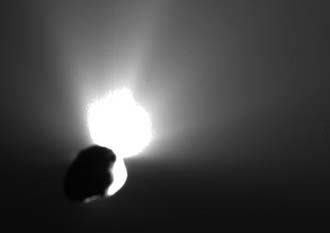
July 10, 2005 Austin, Texas - Astronomer Anita Cochran has been working at the University of Texas since 1982. Now she is a senior research scientist and Assistant Director of the McDonald Observatory in Austin. She and several hundred scientists around the world are helping to analyze the spectral data from the Deep Impact crash with Comet Tempel I on July 3 to 4, 2005. That night, Dr. Cochran was in Hawaii at the Kech I telescope, the largest in the world, watching to see if a light flare at the moment the impactor hit the very dim magnitude 11 comet could be seen.
Click here to subscribe and get instant access to read this report.
Click here to check your existing subscription status.
Existing members, login below:
© 1998 - 2025 by Linda Moulton Howe.
All Rights Reserved.

